This painting depicts a concubine. Lower on the social ladder were brothel prostitutes, whores, meretrici and courtesans.
Source: Gli abiti de veneziani di quasi ogni età con diligenza raccolti e dipinti nel secolo XVIII, by Giovanni Grevembroch (1731–1807), which in four volumes contains over six hundred watercolours of how Venetians dressed in the 1700s.

Concubines
Some women wore the dress somewhat open with some pearl ornaments, and these were those who, having come to Venice from other places, could not immediately abandon their custom of dressing, but they did it little by little. Hence, it is that sometimes the Courtesans and Concubines looked like married women, even putting rings on their fingers.
In the present portrait, it is worth noting that she did her curls and left her dress open in front of her chest, and with that tip decorated with lace. Because pearls were forbidden to them, they adorned their necks with some strings of silver or gold beads or other things that imitated pearls. They used chains well, and gold or crystal bands, and gold bracelets, and gloves worked up to the middle of the fingers.
The robe was made of cloth or silk, but all surrounded by rich trimmings, according to the convenience of spending. This was fastened with buttons of crystal, gold, or other material, and the skirt was made of silk, or camlet, with foot straps. They wore silk veil capes tied with bows at the corners, and for the most part, they wore white slippers and embroidered stockings. The skirts were according to the season, and the shoes Roman-style. The train was not very long; Indeed, many times some Courtesans appeared in widow’s attire very similar to the Nobles, among those who were not familiar with their detestable condition.
Donna, Forze, Occhi, Voce, Ben, Corpo, Alma,
Trahe, Orba, Anaspra, Strugge, Infeta, Uccide (Bembo).
To the lucky Mrs. Aspasia Zucca, who became the wife of Mr. Decio Capretta according to the fact that she offered herself as the bride of such a cordial husband, we deposit the matter in this wonder.
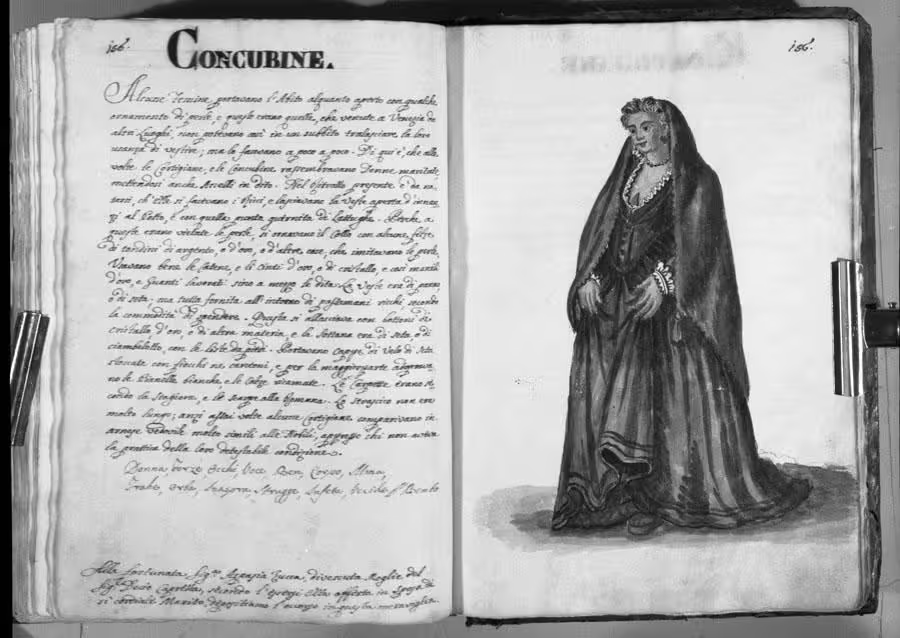
Original Italian text
Concubine
Alcune Femine portavano l’Abito alquanto aperto con qualche ornamento di perle, e queste erano quelle, che venute a Venezia da altri Luoghi, non potevano così in un subbito tralasciare la loro usanza di vestire; ma lo facevano a poco a poco. Di qui è, che alle volte le Cortigiane, e le Concubine rassembravano Donne maritate, mettendosi anche Anelli in dito.
Nel Ritratto presente è da notarsi, ch’Elle si facevano i Ricci, e lasciavano la Veste aperta d’innanzi al Petto, e con quella punta guernita di Lattughe. Perché a queste erano vietate le perle, si ornavano il Collo con alcune filze di tondini di argento, o d’oro, o d’altre cose, che imitavano le perle. Usavano bene le Catene, e li Cinti d’oro, o di cristallo, e così manili d’oro, e Guanti lavorati sino a mezzo le dita.
La Veste era di panno, o di seta; ma tutta fornita all’intorno di passamani ricchi, secondo la commodità di spendere. Questa si allacciava con bottoni di cristallo, d’oro, o di altra materia, e la Sottana era di seta, o di ciambelotto, con le liste da piedi. Portavano Cappe di Velo di seta stoccate con fiocchi ne cantoni, e per la maggiorparte adopravano le Pianelle bianche, e le Calze ricamate. Le Carpette erano secondo la Stagione, e le Scarpe alla Romana. Lo Stascico non era molto lungo; anzi assai volte alcune Cortigiane comparivano in arnese vedovile molto simili alle Nobili, appresso chi non aveva la prattica della loro detestabile condizione.
Donna, Forze, Occhi, Voce, Ben, Corpo, Alma,
Trahe, Orba, Anaspra, Strugge, Infeta, Uccide (Bembo).
Alla fortunata Sig.a Aspasia Zucca, divenuta Moglie del Sig.e Decio Capretta secondo l‘essersi Ella offerta in Sposa di sì cordiale Marito, depositiamo l’occorso in questa meraviglia.
Grevembroch (1981), vol. 3, p. 156.
Related articles
Bibliography
- Grevembroch, Giovanni. Gli abiti de veneziani di quasi ogni eta con diligenza raccolti e dipinti nel secolo XVIII, orig. c. 1754. Venezia, Filippi Editore, 1981. [more]

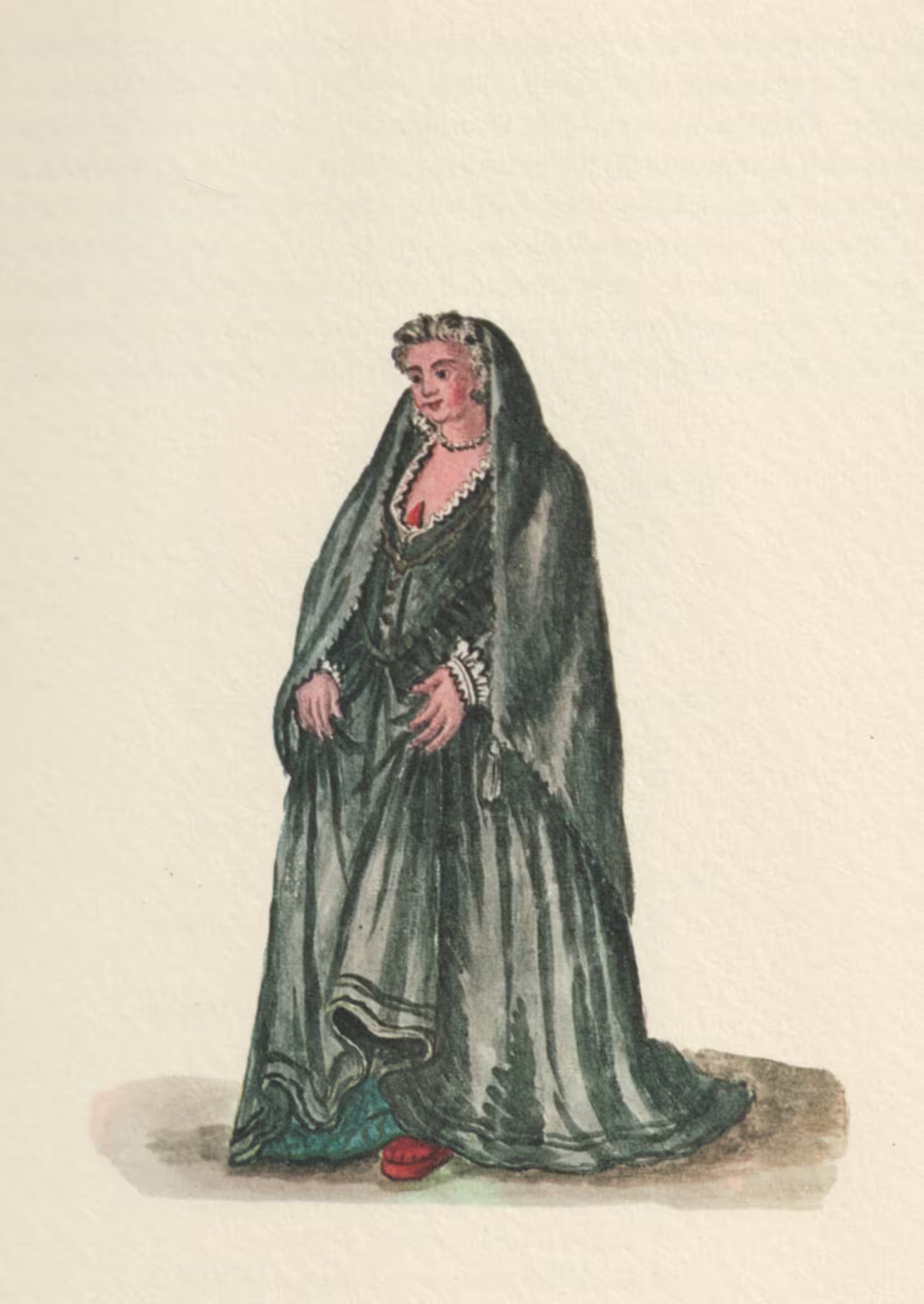
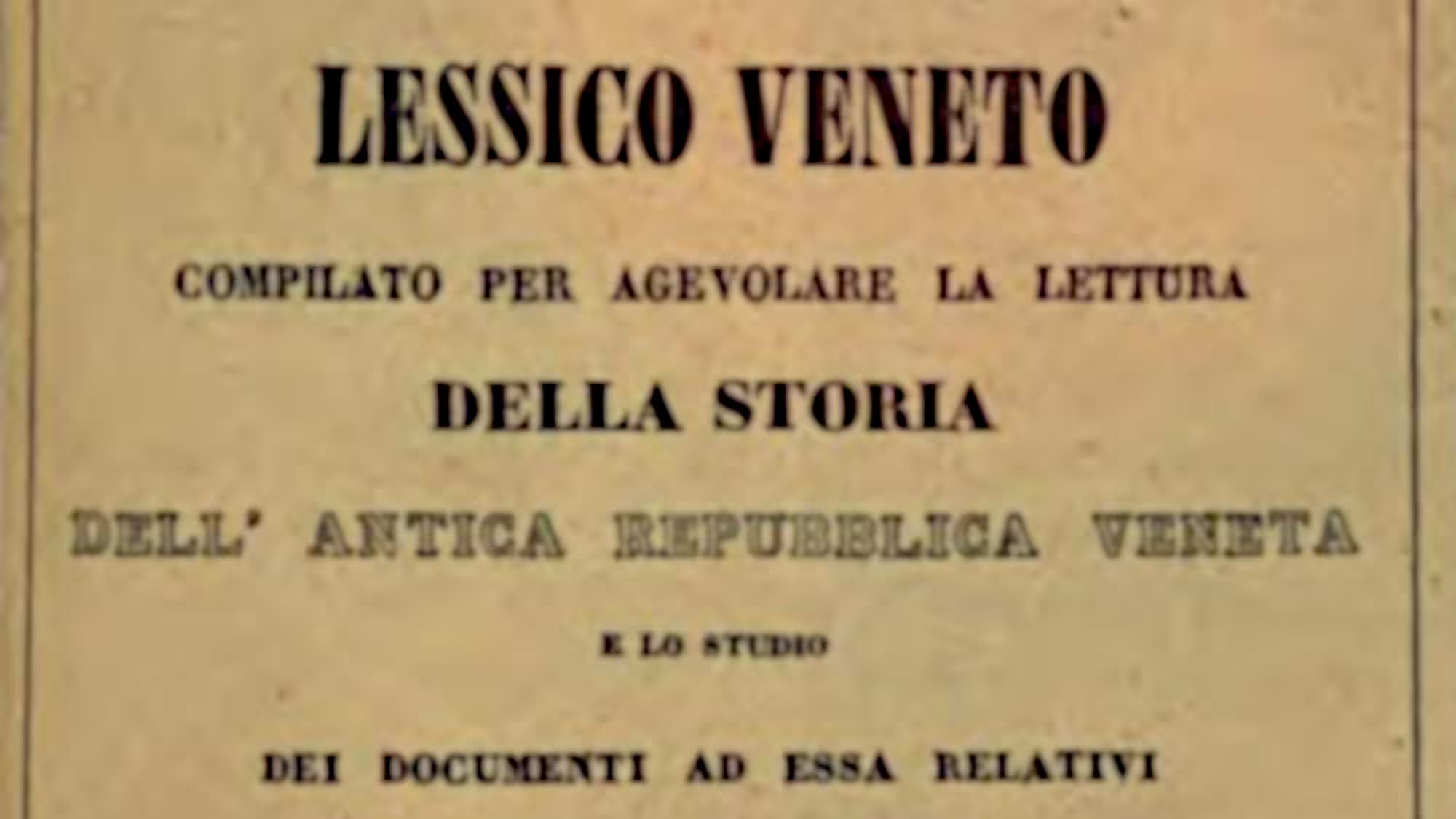
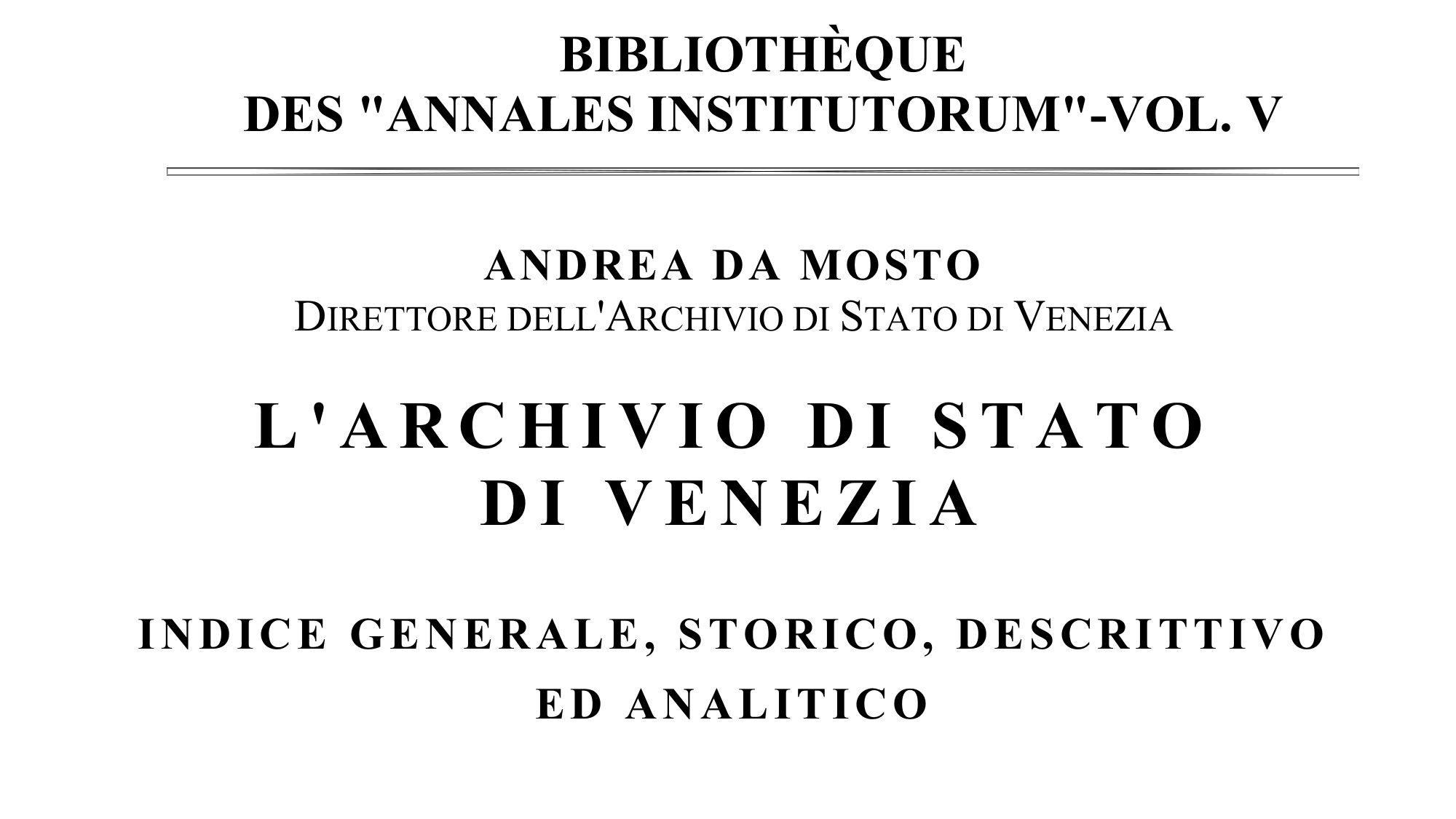
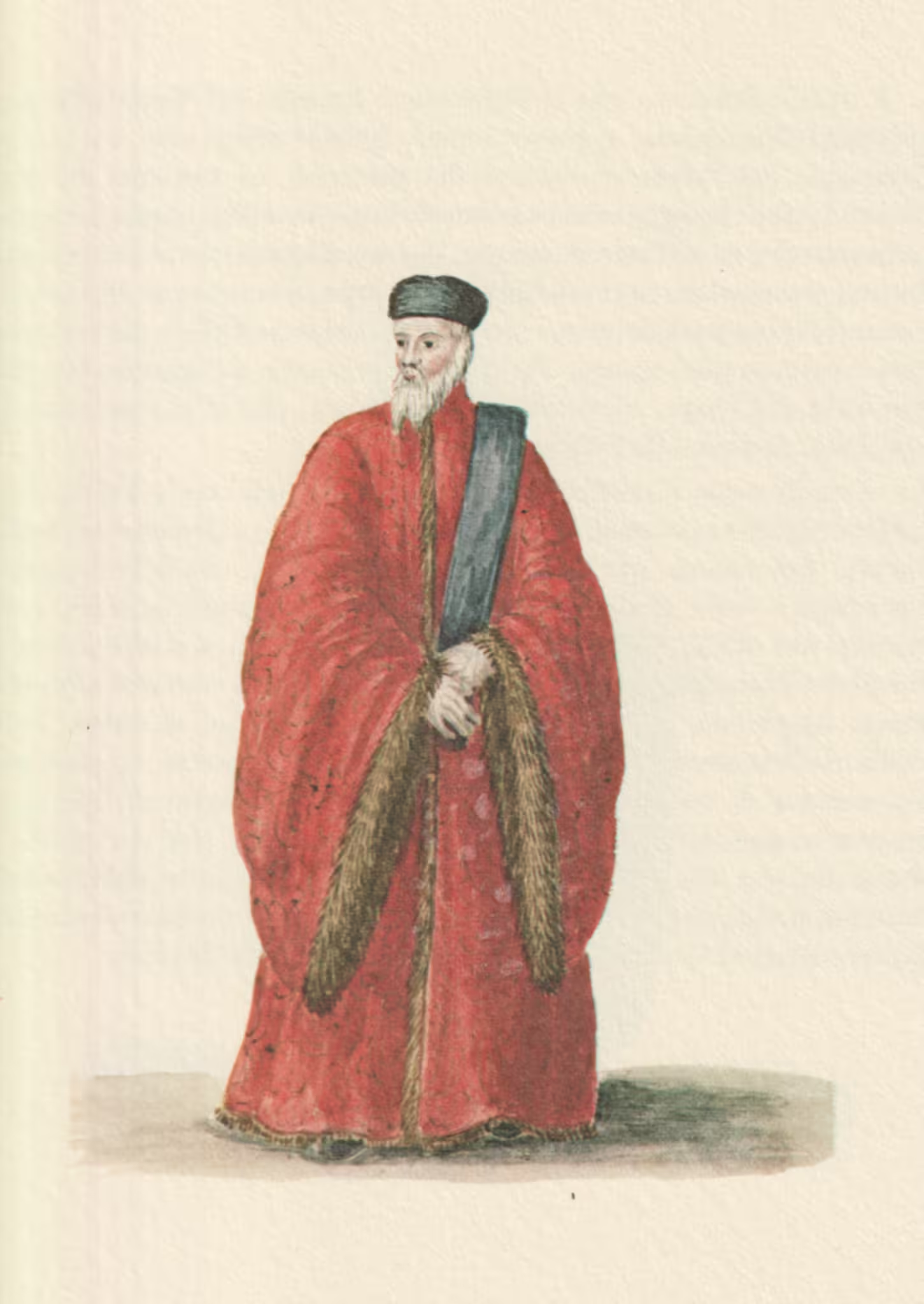
Leave a Reply